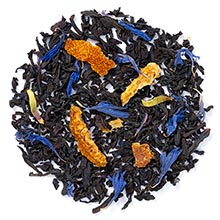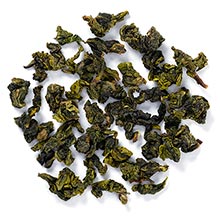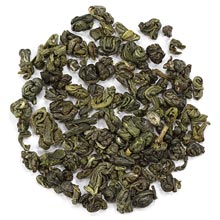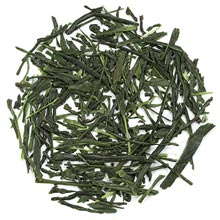The Best Tea Infusers: Tea Balls vs Basket Infusers vs Teapots
by Janelle Wazorick
December 14, 2021

Sure, the tea came with brewing times and temperatures to make an ideal cup, but what's the best way to infuse the delicious flavors trapped in the tea leaves into hot water? Teas come in many shapes and sizes, and while you can brew tea with almost any infuser, selecting the right infuser for your tea will yield a more flavorful cup with less tea particles floating around. Let's talk about how to select an infuser to brew your new tea.
Types of Infusers
There are several different types of infusers and brewing tools available, and chances are you'll pick up a couple as you delve further into te and develop your own preferences. Basket infusers, or metal baskets with supports that rest on the edge of a teapot or mug, are great for versatile tea brewing: they often come with teapots and tea mugs (but can also be purchased separately), are big enough for tea leaves to expand and are easy to clean up.There are also brewing tools such as Adagio's IngenuiTEA, which brews tea and drains it into a mug for easy brewing.
Some infusers fit into the spout and can be made of metal mesh or wire; some teapots have an infuser built-in, either in the form of metal mesh or holes in the teapot at the base of the spout; these spout infusers allow the leaves to fully expand in the base of the teapot and strain them during pouring. Even traditional tools that have stood the test of time, like the Chinese lidded bowl Gaiwan, can be the perfect choice to brew tea.
Read more about the different types of infusers below.
What about Tea Balls?
Tea balls, which are metal mesh spheres that open to accept loose tea, are often found alongside other tea accessories in stores, and many people purchase them as their first infuser. But like what tee-ball is to baseball, tea balls are okay during the beginning of one's loose tea journey, but the use of tea balls is discouraged. There are a few reasons for this:Tea balls are only big enough to accept about one teaspoon of dry loose tea (maybe two for the bigger ones). They don't have enough room to allow the tea leaves to expand, trapping the rich flavors of the tea leaf.
Over time, the tea ball mechanisms weaken or become deformed. The halves of the tea ball sphere might no longer fit together nicely and might not even close as tightly as they once did.
The metal mesh used to make the tea ball is usually a soft metal mesh that can become deformed if not stored properly, possibly compressing the tea ball even further.
If you find yourself looking for an infuser to replace your tea ball, the good news is that many infusers are affordable and are easily accessible. Something like a basket infuser is a great beginner's alternative to the tea ball: perfect for single-cup brewing, has plenty of room for the tea leaves to expand, and is easily cleaned.
Brewing the Teas
Some infusers are better for brewing certain types of tea than others: for example, some teas might require larger spaces to fully expand while other smaller teas have fine particles that can slip through most infusers.The following teas are some popular choices from the various tea types. If the tea you bought isn't listed, no sweat: just find the tea that closely describes how your tea leaves look (in other words, you may have bought another oolong other than Tie Kuan Yin, but it might have a similar appearance and can be brewed with the same tools).
Small Tea Leaves
Like Earl Grey Bravo.
The popular black tea has graced many teapots since it was first blended in the 1830s. Earl Grey is a versatile tea (being enjoyed both straight or with additional flavors) and is easy to brew. Earl Grey leaves are not so big that they need a lot of room to unfurl, but not so tiny that they can easily slip through most infusers. Even the beginner can get away with using a tea ball for this tea; although it's still recommended to avoid tea balls, brewing Earl Grey in one is not the end of the world. Avoid infusers with big holes or gaps that the leaves can easily escape through.
Recommended: Almost any infuser! Check out Big Basket Ceramic infusers!
Avoid: Basket Infusers with big holes, Wire Spout Infusers (depending on how big the gaps in the wire are)
Big, Expansive Rolled Leaves
Like Tie Kuan Yin.
One of the most beloved oolongs, Tie Kuan Yin is great for multiple infusions with the leaves expanding more with each infusion. Tie Kuan Yin needs wide spaces to unfurl and release its flavors over multiple brews. The traditional route to brewing this lovely tea is a Gaiwan, a Chinese tea-brewing lidded bowl, but any vessel with wide open spaces that allows the tea to freely unfurl is suitable. Avoid small, confining infusers for this free-range tea (especially tea balls).
Recommended: Gaiwans, IngenuiTEA, Teapots with Spout Infusers, Big Basket Infusers, Big Basket Ceramic infusers
Avoid: Small Basket Infusers, Tea Balls
Small, Rolled Leaves
Like Gunpowder.
A staple in both Chinese teas and Moroccan Mint Tea, Gunpowder is one of the most popular green teas. It's small pellet-like beads unfurl as hot water hits them, brewing a slightly smokey green tea. While the leaves need some room to unfurl, they aren't as expansive as oolongs. Most basket infusers are perfectly fine to brew Gunpowder as well as teapots with fine metal mesh infusers or small holes as spout infusers. Avoid infusers that are too small or have wide gaps or openings.
Recommend: Gaiwans, Big Basket Infusers, Teapots with Small Hole or Metal Mesh Spout Infusers, Big Basket Ceramic infusers
Avoid: Tea Balls, Teapots with Spout Infusers with Big Holes
Whole Flower, Small Particles
Like Chamomile.
While not a true tea, this herbal tea has earned a place in many tea connoisseurs' hearts. Chamomile is the home remedy to cure tummy aches and nerves. The only major concern with chamomile is the fine particles that break off the flower, which can end up in your mug if you don't use the right infuser. Infusers with a tight weave are ideal for keeping those particles out of your mug, whether in the form of a basket infuser or even disposable tea bags. Additionally, Chamomile requires two teaspoons of dry goods, so make sure the infuser you're using is big enough.
Recommended: Disposable Tea Bags, Big Basket Infusers (either Fine Metal Mesh or Perforated with Tiny Holes), Big Basket Ceramic infusers
Avoid: Spout Infusers, Tea Balls
Long and Narrow, but Small Particles
Like Sencha.
Like with many Japanese teas, brewing Sencha can be tricky but well worth the effort. This tea is sensitive to temperatures, and it's recommended to heat the brewing vessel (and even the infuser) before brewing. Because of small dust-like particles often accompany sencha, an infuser with a fine mesh is highly recommended to keep any crumbs outside of your cup.
The size of the infuser isn't a major concern since Sencha leaves are long and thin with minimal expansion. While gaiwans are great for other green teas, they aren't suited for Sencha due to the fine particles and small leaves which can slip past the lid. If you can, opt for a traditional Japanese kyusu teapot made for sencha, which comes with a built in spout infuser.
Recommended: Big Basket Infusers (either Fine Metal Mesh or Perforated with Tiny Holes), IngenuiTEA, Kyusu Teapots, Metal Mesh Spout Infusers, Big Basket Ceramic infusers
Avoid: Wire Spout Infusers, Gaiwans